The hero message is the most important copy on any Homepage or landing page.
It’s the first message visitors see, and if it’s not clear or persuasive, it may be the last message they see before leaving your site.
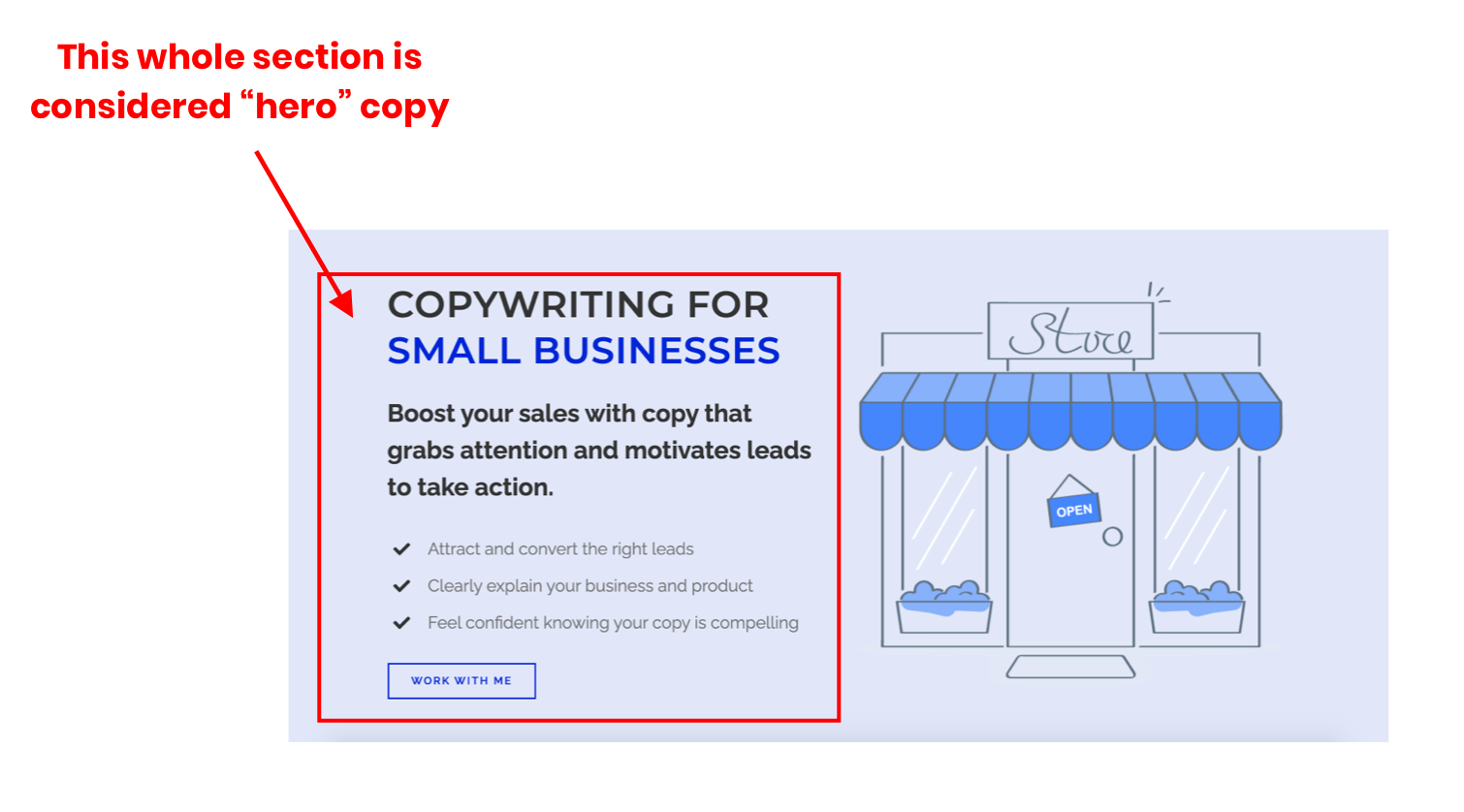
Despite the importance of the hero message, few businesses get it right.
Why?
There are a lot of reasons hero copy be ineffective, from overly complex language to vague value props, and everything in between.
But beyond the language itself, there’s another important piece of the puzzle that 95% of businesses aren’t even thinking about when it comes to writing their hero copy:
Their visitors’ position in the sales funnel.
In this article, we’re going to cover WHY sales funnel position matters when it comes to writing your hero message, and HOW to use that information to write more effective hero messages for your site.
Let’s dive in!
Writing effective hero copy starts with knowing your visitors’ position in the sales funnel
Every person who comes to your site is located somewhere in the sales funnel.
They might be totally unaware that your brand exists, they could be ready to buy today, or they’re somewhere in between (it’s usually a mix of all 3).
If you’re new to sales funnels, check out the visual below which is a very basic sales funnel from a copy perspective (I explain these 5 stages in detail later on):
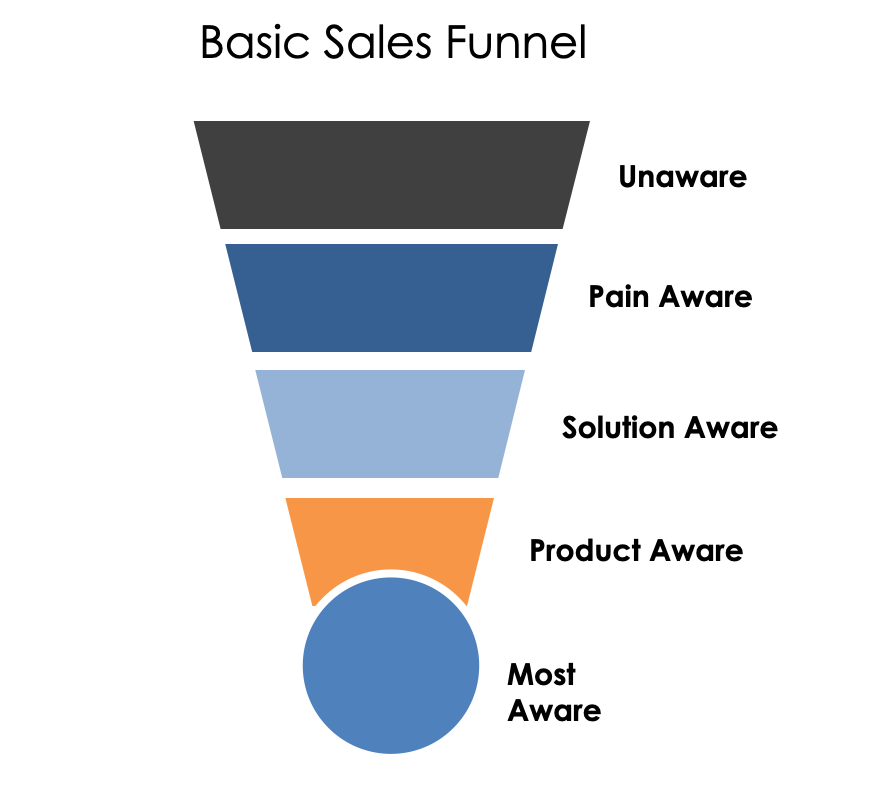
As you can imagine, each stage of the sales funnel has very different wants and needs, and your hero message must reflect that.
But how do you craft an effective hero message for every type of visitor?
The short answer is, you don’t.
Unless your customer base is very small and homogeneous, it would be very difficult to create ONE hero message that’s effective for every type of visitor (you’re better off creating multiple landing pages targeted to specific audiences).
BUT, if you know enough about the majority of your visitors (or the visitors YOU find most valuable), you can prioritize the needs of that group, and create an effective hero message that draws them in.
This may be an abstract concept, so let’s break it down in simpler terms with an example.
Think of your hero message as the “greeting” for people who walk into your store.
If the person has never been to your store, they’re most likely just browsing and gathering information (in this case, the visitor is at top of the sales funnel).
Because this person has no prior knowledge of your store, you might say something that clearly explains what you’re selling and why it’s special, for example:

On the other hand, if one of your regular customers walked into your store, you wouldn’t want to tell them something they already know.
You’d want to use your prior knowledge of that customer to present them with a more specific offer that’s more tailored to their wants and needs, for example:

While your website is not a physical store, the concept is the same — you have to know something about the people who are coming to your site in order to craft an effective “greeting.”
But how do you know where your visitors are in the sales funnel?
There are many ways to answer this question, from analyzing your own website data to conducting customer interviews, and everything in between.
The more customer data you have, the easier it will be to answer the question above, but for the purpose of this article, let’s assume you’re not running ads and only have your own website data to work with.
If you have Google Analytics set up (and you should), take a look at the data to get a sense of where people are coming from, what keywords they’re using to find you, which pages they are gravitating toward, how long they’re sticking around, and so on.
Psst! Need help with this? Let’s work together! 🙂
For example, if you see that the majority of your visitors are coming from search, you already know that they’re likely in the “Pain Aware” or “Solution Aware” stage, as they’re searching for information/solutions and stumbled upon yours.
If they’re coming from a “reviews” platform like Yelp, you know they’re likely comparison shopping, which means they’re in the “Solution Aware” or “Product Aware” stages.
If you wanted to take things a step further, you could also analyze the search terms associated with your organic traffic to make assumptions about awareness and intent (aka position in the sales funnel).
For example, search terms that contain phrases like “how do I…” or “what is…” are indicators of a higher position in the sales funnel (meaning the visitor is searching for information related to a problem vs a solution itself), while phrases like “best…” or “near me” are indicators of a higher level of awareness and intent (closer to the bottom of the sales funnel).
Keep in mind, these are very basic examples. There is overlap between stages and not every visitor is always located within a clearly defined “stage.”
The best thing you can do is invest in customer research and TEST lots of ideas, so you can skip the generalizations and zero in on the right approach for your website and your visitors.
Matching your hero message to your visitors’ position in the sales funnel (with examples!)
To illustrate this concept further, I’m going to walk you through 5 examples of hero messages which have all been adapted to fit different stages of the sales funnel.
The product is the same for all of the examples (I’m using my former client Risewell as the guinea pig), but the message changes depending on “The Visitor’s” position in the sales funnel.
Remember, there is often overlap between the sales funnel stages, which means a message you’ve designed for someone in the “Unaware” stage could absolutely work for someone in the “Solution Aware” stage, and vice versa.
It’s all about running tests to find the right hero message for your Homepage or landing pages.
Alright, enough with the disclaimers — let’s dive in to the examples!
#1: Unaware
A visitor is likely to be Unaware if they haven’t yet identified their pain or your role as the solution to their pain. This person is not actively searching for solutions. They have no awareness of your product/brand and are not yet motivated to take action.
Where is the visitor coming from?
While this can vary, someone at the top of the funnel is likely being driven to your site through some form of paid marketing (versus them searching for it on their own).
What kind of hero copy should I focus on?
If you’re communicating with visitors who are in the “Unaware” stage, your hero copy needs to be clear, simple, and direct without being boring. It still needs to grab attention, but you should always opt for copy that’s “clear and concise” over “clever.”
In the example below, I chose hero copy that is simple, clear, and focuses on their main value prop: toothpaste that’s both natural and effective (but getting more clear and specific).
Notice the CTA is “learn more” vs “shop now” — this is on purpose, as someone at the top of the funnel may not be ready to buy and likely needs more information (and more touch-points with the brand) before pulling the trigger.
*Note: This is just an example for the purpose of this article; the claim “the only natural toothpaste that’s clinically proven to work” may not be true. 😉
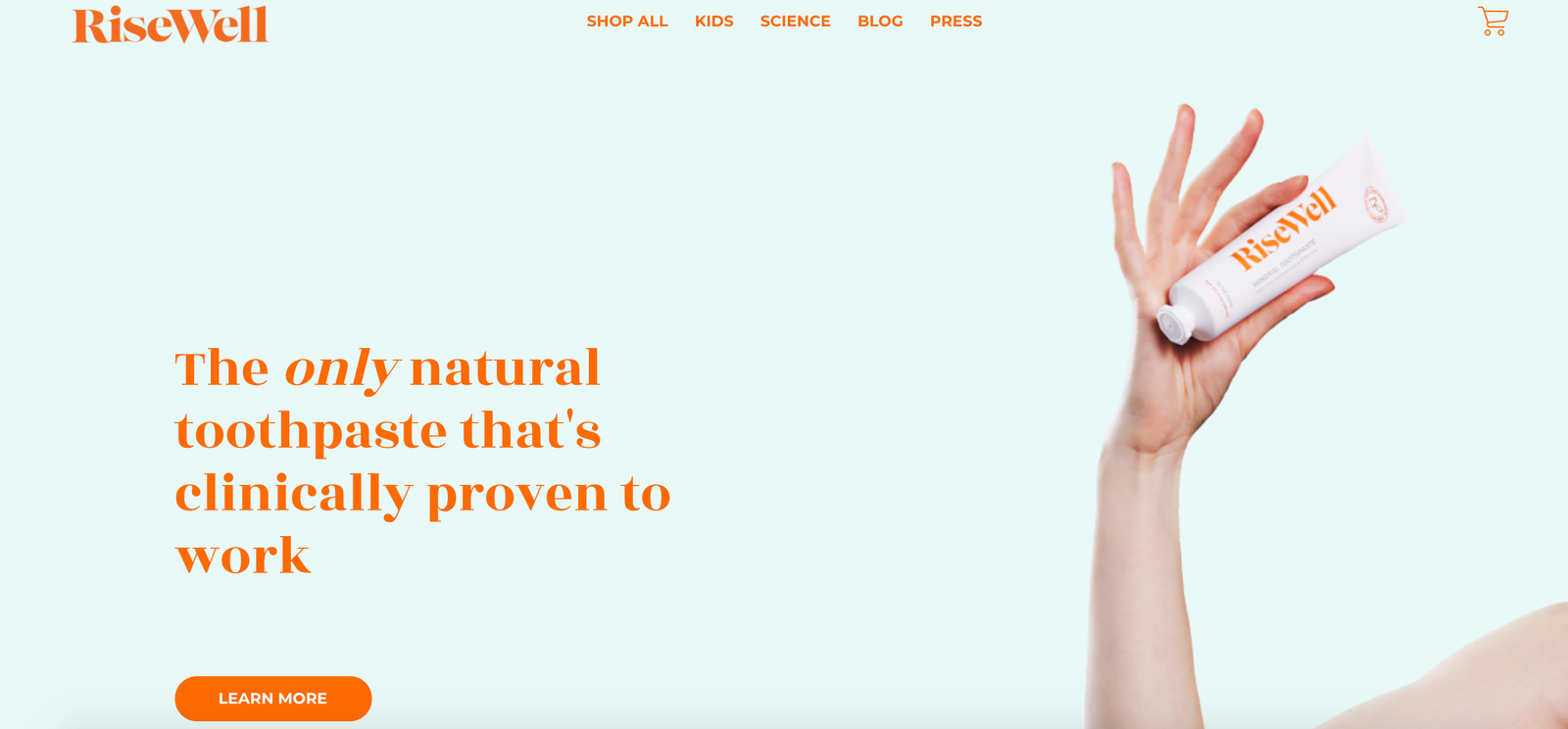
Another way you could take this hero would be through the lens of a “secret” or a “story” you want to share with top-of-funnel leads; in the example below, I used one of their customer testimonials that could easily link to a landing page that tells the story (and sells the product!) in more detail.
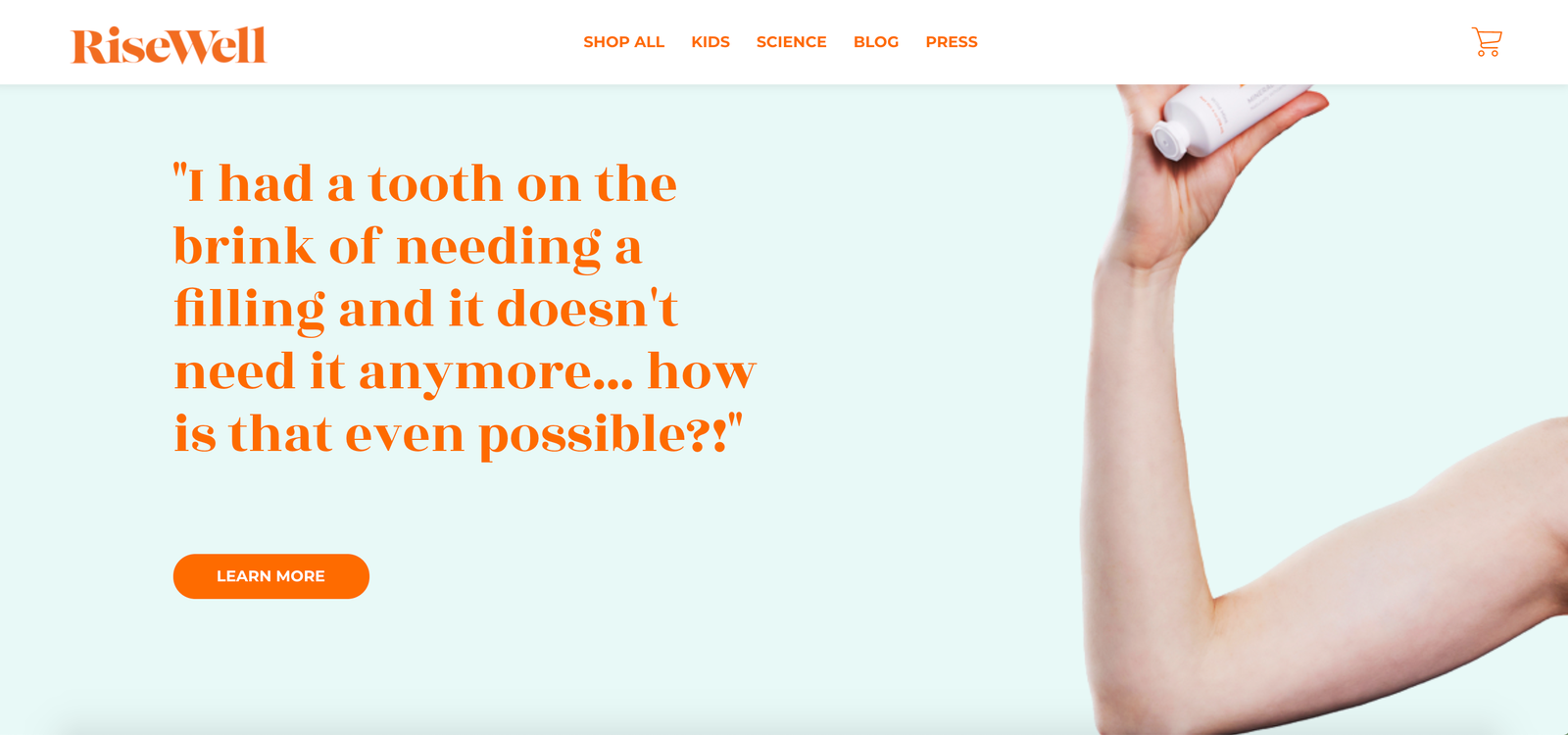
#2: Pain Aware
A visitor is likely to be Pain Aware if they are feeling a pain, but have not yet identified that solutions exist for their pain. This person is unlikely to be searching for solutions, but may be searching for information related to their problem or “low commitment” solutions (i.e. – a free eBook or some kind of low barrier offer).
Where is the visitor coming from?
Similar to the “Unaware” stage, it’s likely that your “Pain Aware” visitor is being driven to your site through some form of paid marketing OR if they’re searching for information regarding their pain, it’s possible they could stumble upon your site organically.
What kind of hero copy should I focus on?
If you’re communicating with visitors who are in the “Pain Aware,” stage your hero copy needs to be empathetic; you need to demonstrate that you understand the problem they’re experiencing and eventually provide them with some “pain relief” further down the page.
In the example below, I chose hero copy that speaks to a common pain point among natural toothpaste users (they want to use natural toothpaste, but they’re not convinced it’s actually keeping their teeth clean and healthy). I took the pain point and turned it into a question to “start the conversation” with visitors who land on the site.
Notice how I also changed the CTA to “learn more” which could drop them down to a content section below that speaks to their problem, or it could lead them to a targeted landing page.
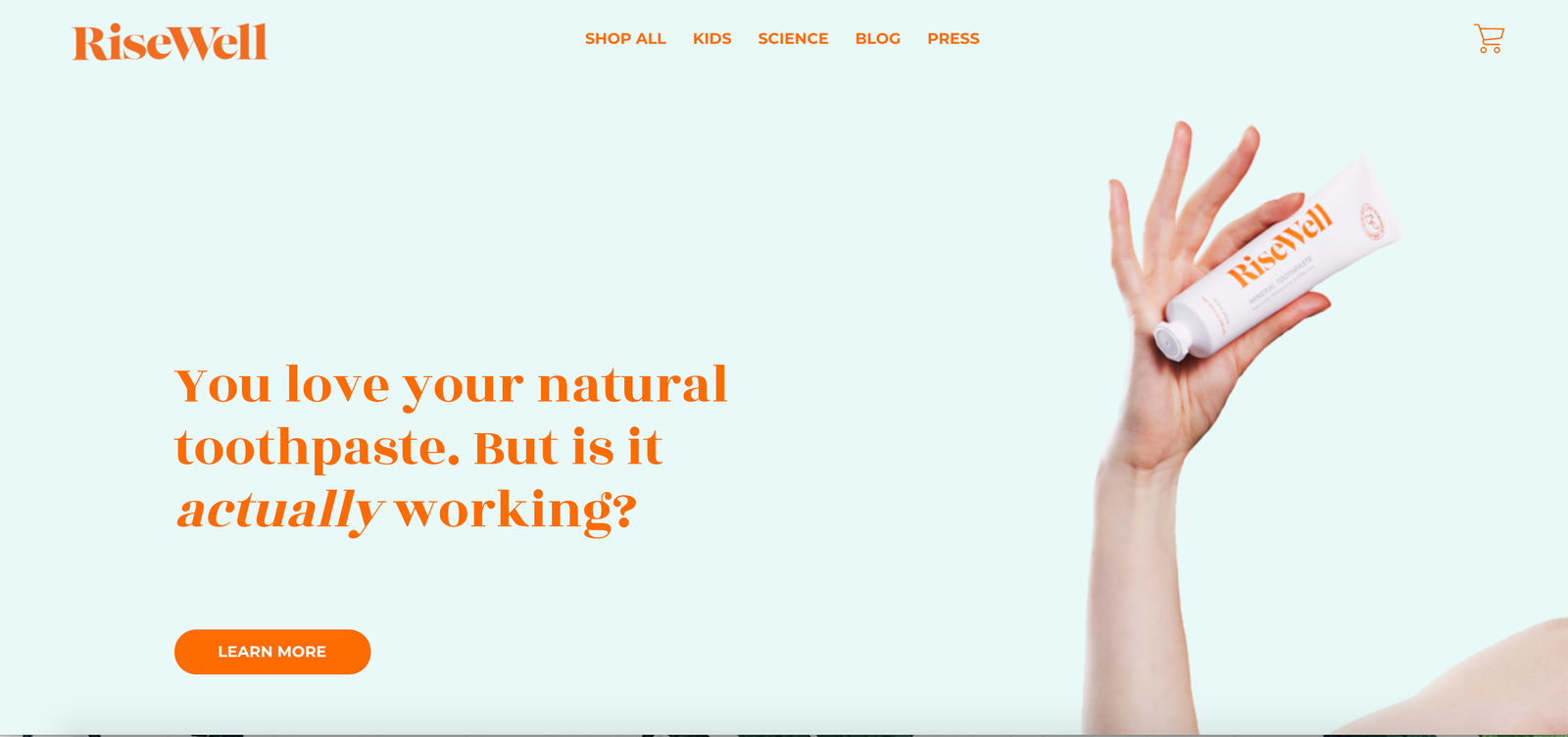
#3: Solution Aware
A visitor is likely to be Solution Aware when they’ve felt the pain and discovered that solutions exist for it. This person is more likely searching for information about their problem, as well as potential solutions.
Where is the visitor coming from?
While paid marketing could be driving them to your site, it’s likely they discovered your solution while searching for information and/or solutions that could solve their problem.
What kind of hero copy should I focus on?
If you’re communicating with visitors who are in the “Solution Aware” stage, your hero copy needs to demonstrate value. Because your product is one of many solutions this visitor might be considering, your hero copy needs to be super clear and focused on your core differentiators, benefits, and value props.
In the example below, I chose hero copy that highlights a few of Risewell’s core value props which not only helps to differentiate the product, they also speak to the shortcomings of other natural toothpastes.
In this case, I would probably link to the product page for the toothpaste which would explain why the formula is so innovative or different.
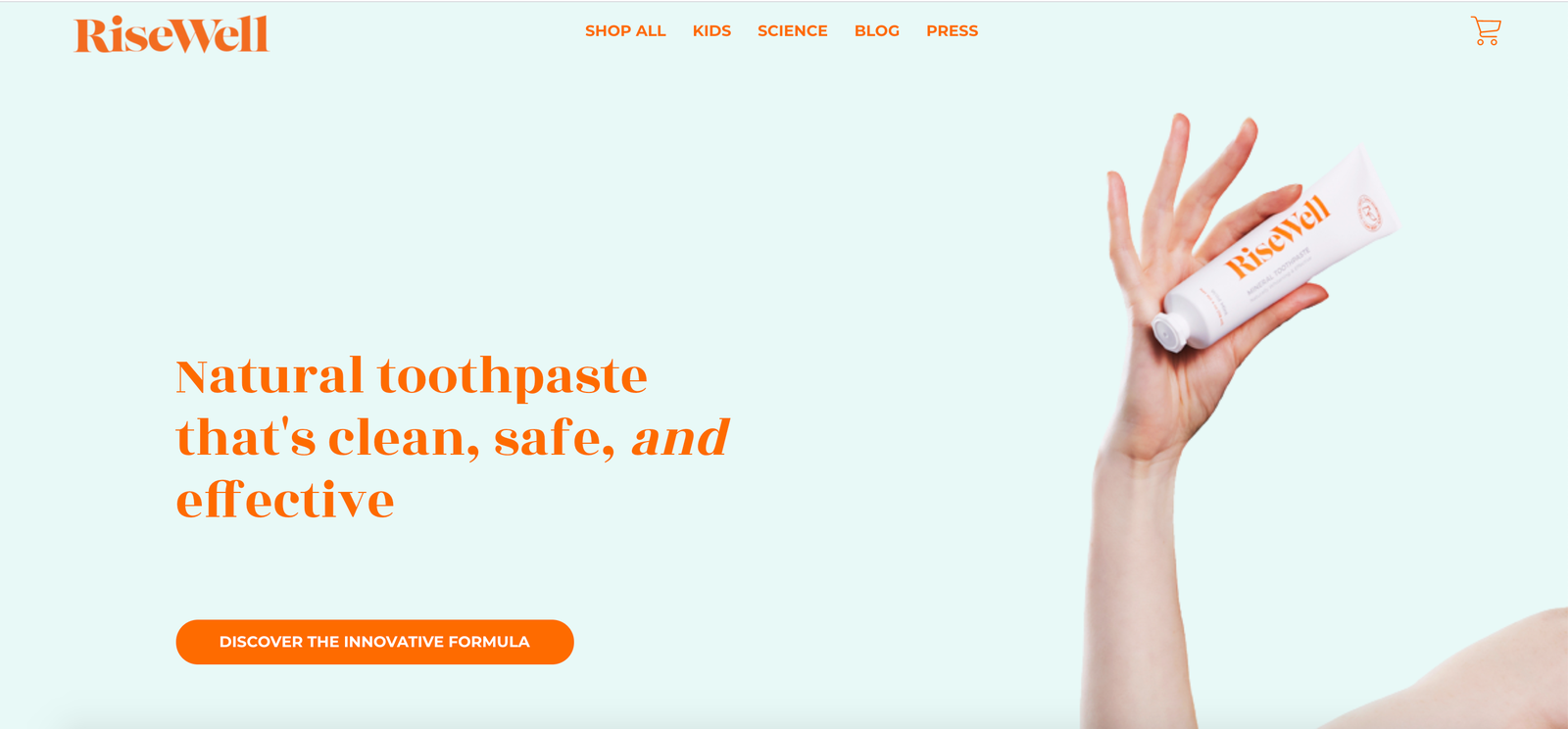
Here’s another example that’s similar, but phrases the value props in a way that may feel even more differentiated:

#4: Product Aware
A visitor is Product Aware if they know your product is one of the solutions to their pain. This person is actively searching for solutions. They are aware of your product/brand and they could be motivated to take a desirable action.
Where is the visitor coming from?
At this point, the visitor knows who you are and they’re interested in what you’ve got. They may be coming to your site through a retargeting campaign, your email list, an affiliate link, a comparison page, or even through a good ol’ word-of-mouth referral (among other ways).
What kind of hero copy should I focus on?
At this stage of the funnel, use hero copy that helps you differentiate from your competitors. Incorporate social proof or other elements that support your claims. Demonstrate your authority and work on overcoming objections, fears, or doubts. Use guarantees or copy that reassures your visitor that THIS is the product for them.
Now this doesn’t LOOK pretty (I’m a writer, cut me some slack), but the idea is this: Take a real testimonial and add some additional copy that backs up your claims with proof. In this case, I also updated the CTA with even more proof regarding the number of 5-star testimonials (again, Risewell doesn’t have 50k+ reviews, it’s just an example).
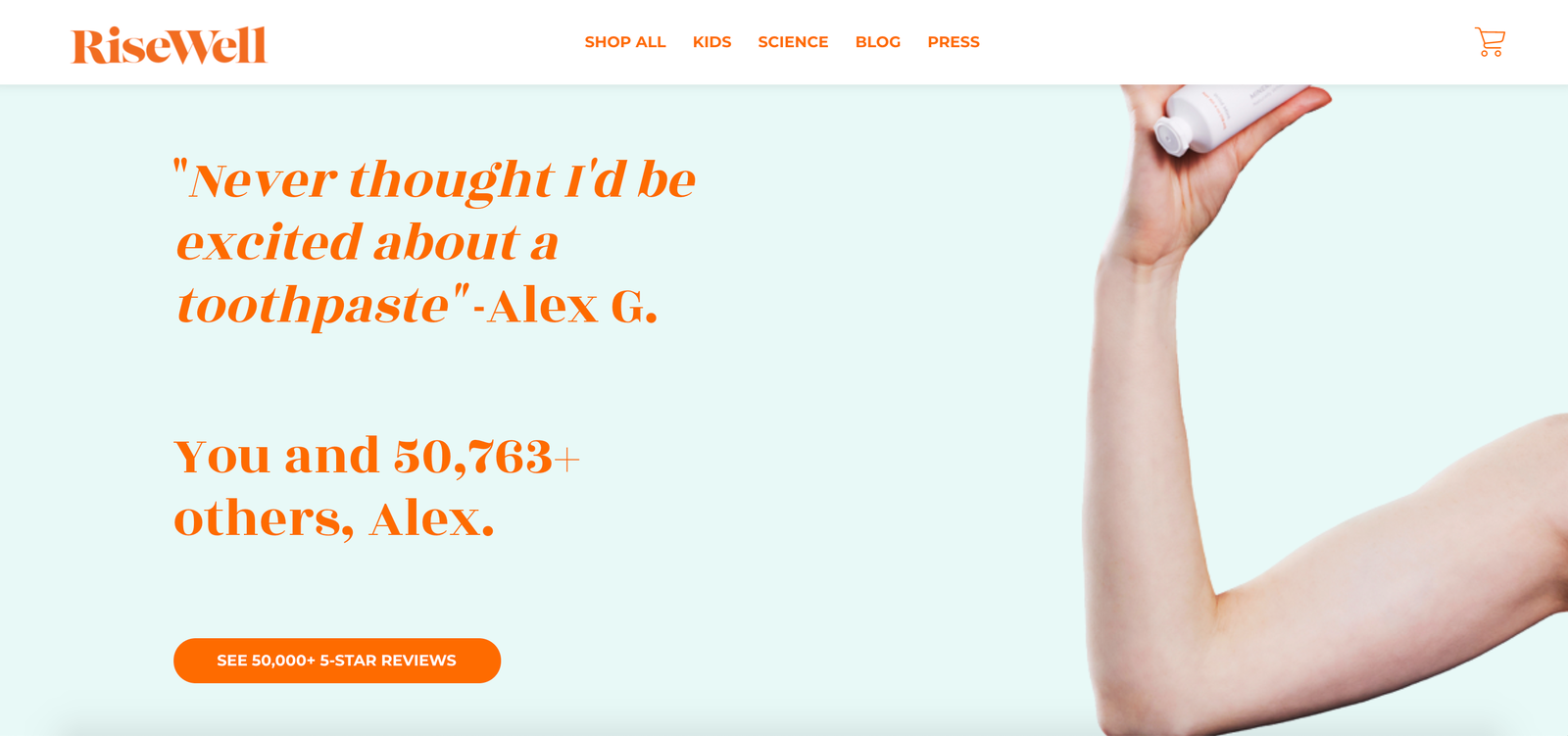
#5: Most Aware
A visitor is Most Aware when they know your product is one of the solutions AND is likely to be the best solution to their pain. This person is highly motivated to solve their problem and is ready to take action.
Where is the visitor coming from?
Very similar to the last stage, this is a visitor who is extremely familiar with you and what you’re offering; they might be a subscriber on your email list, an Instagram follower, or even a friend of one of your customers. This is a RED HOT lead!
What kind of hero copy should I focus on?
This person is ready to buy, so you don’t want to waste time telling them information they already know or trying to “sell” too hard. You want to give them your best offer and make it sound as appealing as possible (i.e. – use enticing language, added bonuses, urgency, scarcity, FOMO, etc).
In the example below, I chose hero copy that speaks directly to a big sale because this customer is ready to buy and I want to give them a reason to do it NOW! Notice how I used urgency (24-hour flash sale), a clear offer (50% off all toothpastes), and scarcity (“while supplies last!”).
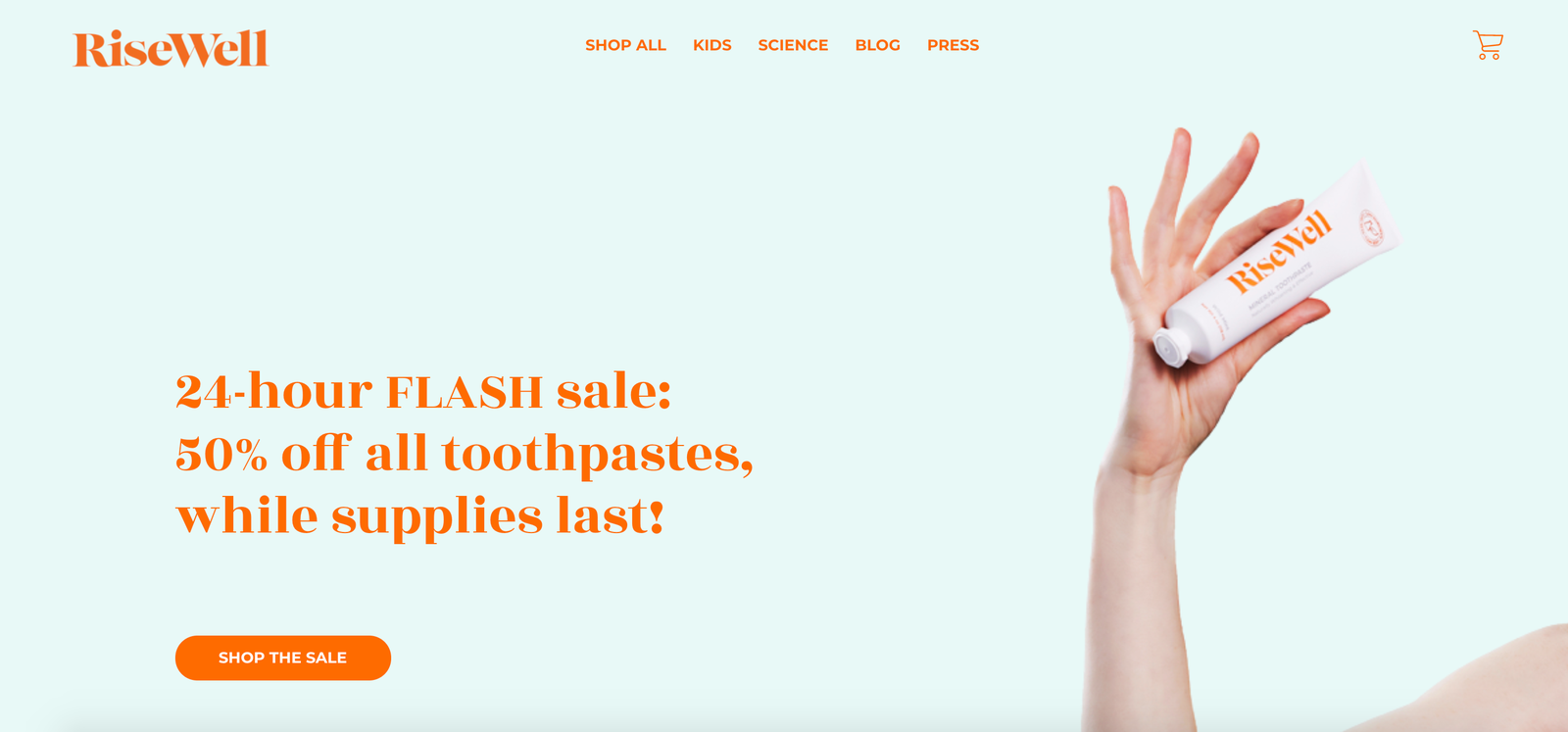
Which hero message is right for your visitors?
As you can see from the many examples above, your hero message can vary considerably depending on who is visiting your site, where they’re coming from, and their position in the sales funnel.
Now that you know how it works, I encourage you to evaluate your own analytics to ensure your message is as effective as possible (if nothing else, you’ll be more aware of the strategy behind the hero messages for your favorite products, which is always fun!).
If you need help translating your analytics or conducting customer research, feel free to reach out any time (annie1maguire@gmail.com) or learn the basics by downloading my FREE guide: An Intro to Customer Research.
